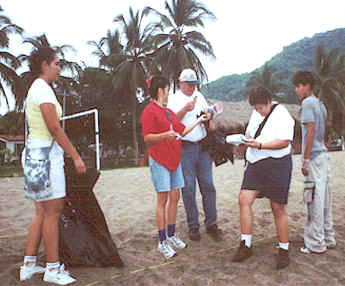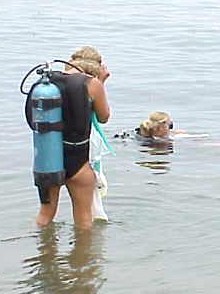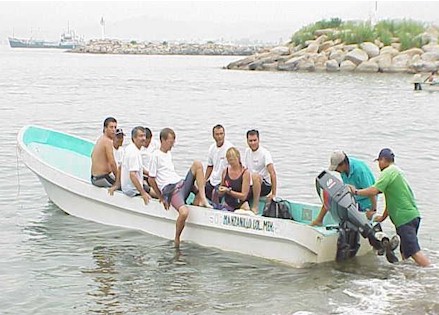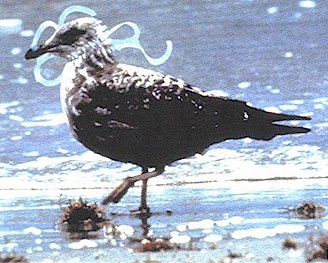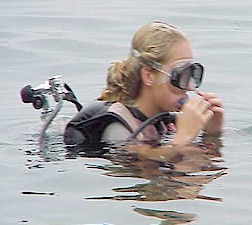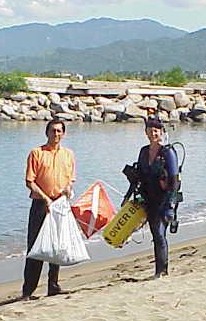
The primary purpose of the orientation dive was to look for potential hazards, check ocean contamination, and survey for ocean tides and currents.
Prior to the event, San Pedrito had to be surveyed by a knowledgeable diver.
In just 10 minutes, approximately 20 lbs. of trash was collected, most of it plastic containers and bags.
Left, Sergio Montiel, owner of El Marino restaurant, assists PADI Instructor Susan Dearing out of the water with a bag of water-soaked trash.
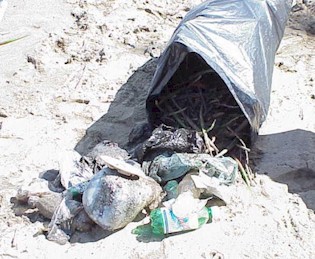
One week prior to the event, a press conference was held. The purpose was to show the attending print and radio media how much trash was in San Pedrito, and how urgent the need was for a continuing underwater clean-up program. Representatives from 4 major newspapers and 2 radio stations attended.

